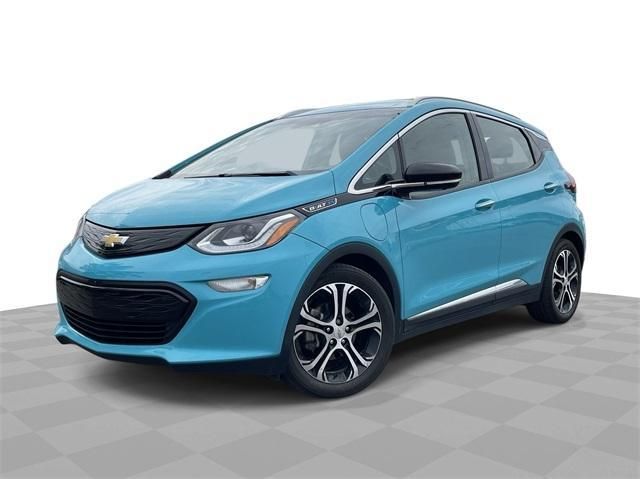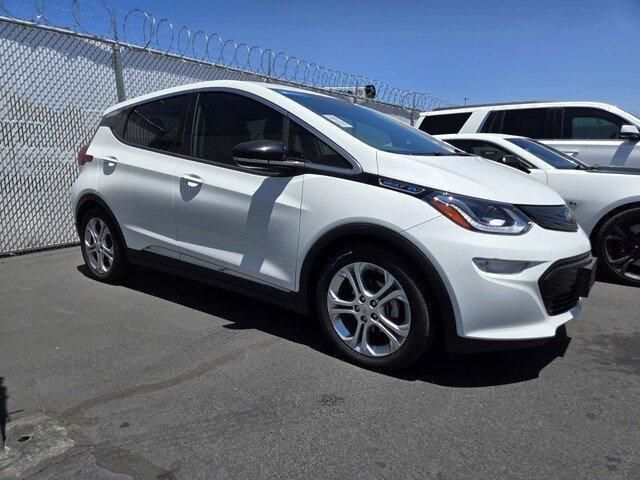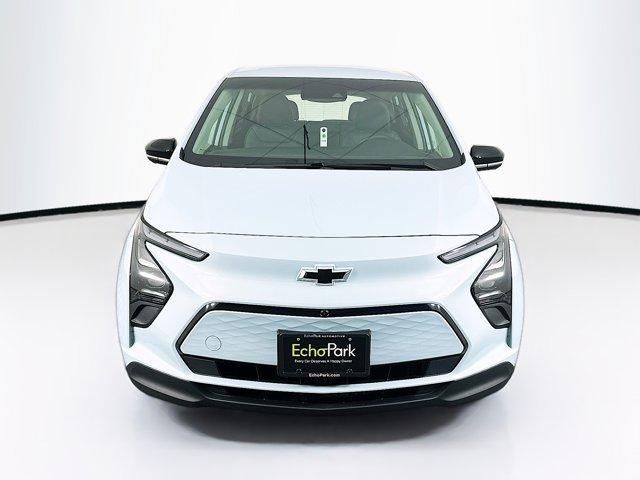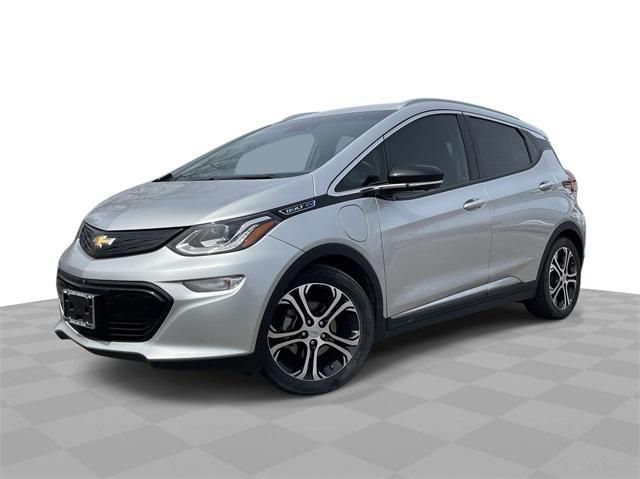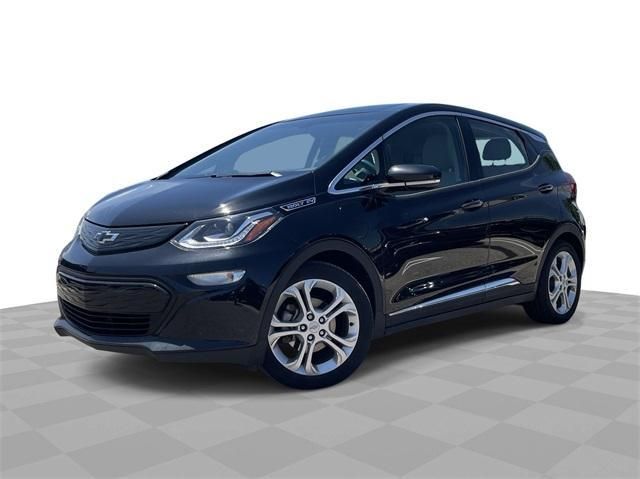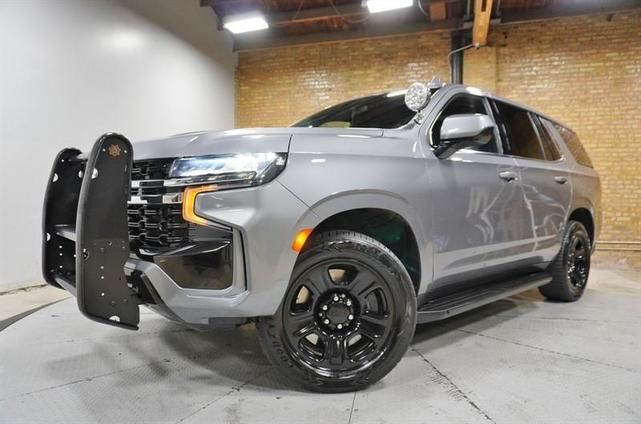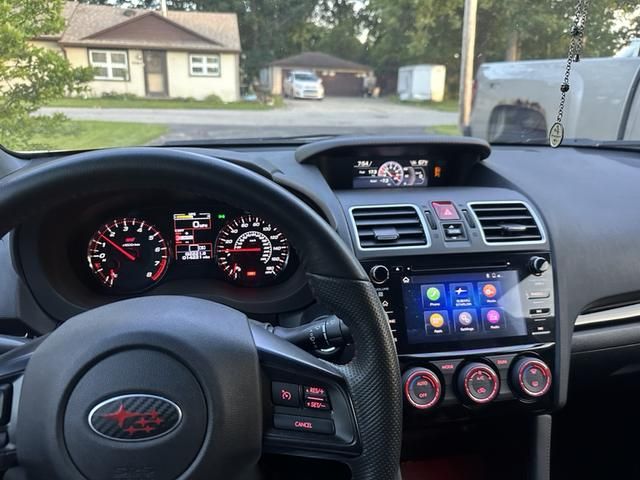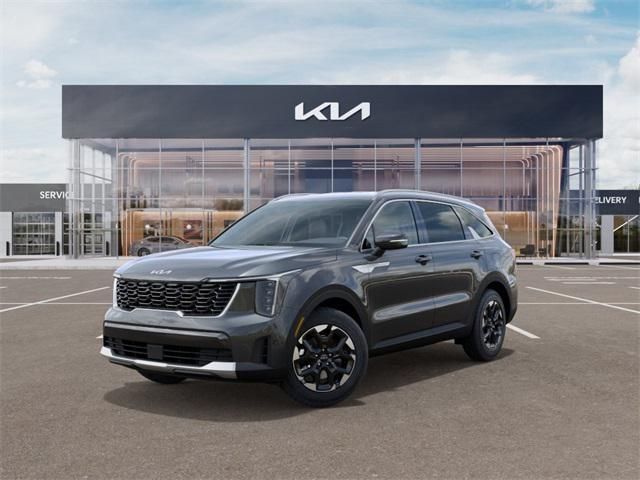
2019 CHEVROLET BOLT EVVIN: 1G1FY6S02K4141501
Historical Records
Damage to rear
Vandalism damage reported
Damage to front
| Year | 2019 |
| ODO | 9866 mi |
| Seller | Hidden text (Hidden text) |
| Location | Salt Lake City, UT, 84115 |
| Date | appeared 2 years ago latest price $7318 sale post disappeared 2022-05-25 |
| Sale Website Type | classifieds |
| Notes | |
| Hidden text | |



| Body Style | Wagon |
| Color | Shock |
| Transmission | 1-Speed Automatic |
| Engine | Electric Motor |
| Drive | Front-wheel Drive |
| Fuel Type | Electric |
- Air filter cabin
- Hidden text
- Audio System Chevrolet Infotainment System With 10.2 Diagonal LCD Color Touc...
- Hidden text
- Cargo cover
- Hidden text
- Child Safety Locks
- Hidden text
- Door locks power programmable with lockout protection
- Hidden text
- Final drive ratio 7.05:1
- Hidden text
- Head restraints rear outboard seats articulating
- Hidden text
- LATCH system (Lower Anchors and Top tethers for CHildren) for child safety s...
- Hidden text
- OnStar and Chevrolet connected services capable (Fleet orders receive a 3-mo...
- Hidden text
- Recovery hook front
- Hidden text
- Seat adjuster front passenger 6-way manual
- Hidden text
- SiriusXM Radio Enjoy a 3-month All Access trial subscription with over 150 c...
- Hidden text
- Suspension front independent
- Hidden text
- Tow Hooks
- Hidden text
- Wipers front intermittent variable with washers
- Hidden text
- Alternator none
- Hidden text
- Auxiliary Input
- Hidden text
- Charge cord 120-volt portable
- Hidden text
- Cruise control electronic with set and resume speed
- Hidden text
- Driver airbag
- Hidden text
- Front Side Airbag
- Hidden text
- Heat ducts rear (Deleted when (K1T) Rear Seat Delete Package is ordered.)
- Hidden text
- Liftgate handle
- Hidden text
- Pedestrian safety signal automated external sound generator at low speeds al...
- Hidden text
- Remote Keyless Entry extended range with remote start panic button and door ...
- Hidden text
- Seat belts 3-point driver and front passenger includes pretensioners and loa...
- Hidden text
- Steering column tilt and telescopic
- Hidden text
- Telescopic steering column
- Hidden text
- Visors driver and front passenger sliding vanity mirrors covered
- Hidden text
- Alloy Wheels
- Hidden text
- Audio system feature USB ports (2) and auxiliary input jack located in front...
- Hidden text
- Charge Control Programmable Time Of Day With Charging Status Indicator Light...
- Hidden text
- Cruise Control
- Hidden text
- Drive mode control switch (Normal and Sport)
- Hidden text
- Floor mats carpeted rear
- Hidden text
- Headlamps high intensity discharge low and high beam projector
- Hidden text
- Lamps stop and tail LED
- Hidden text
- Passenger Airbag
- Hidden text
- Regen on Demand steering wheel paddle regenerative braking
- Hidden text
- Seat belt indicator front passenger
- Hidden text
- Stability Control
- Hidden text
- Teen Driver Mode Configurable Feature That Lets You Activate Customizable Ve...
- Hidden text
- Vehicle Anti-Theft
- Hidden text
- Air Conditioning Single-Zone Automatic Climate Control
- Hidden text
- Audio controls on steering wheel
- Hidden text
- Brakes 4-Wheel Antilock 4-Wheel Disc
- Hidden text
- Child Safety Door Locks
- Hidden text
- Door handles inside chrome
- Hidden text
- ENGINE NONE
- Hidden text
- Head restraints front adjustable (up/down)
- Hidden text
- Keyless start push button
- Hidden text
- Navigation System
- Hidden text
- Rear Vision Camera
- Hidden text
- Seat Adjuster Driver 6-Way Manual
- Hidden text
- Side Head Curtain Airbag
- Hidden text
- Suspension Performance Ride And Handling
- Hidden text
- Tires P215/50R17 all-season blackwall Michelin Selfseal puncture-sealing
- Hidden text
- Wiper rear intermittent with washer
- Hidden text
- Antilock Brakes
- Hidden text
- Battery 60 kWh Propulsion Lithium-ion Rechargeable Energy Storage System
- Hidden text
- Chassis standard
- Hidden text
- Defogger Rear-Window Electric
- Hidden text
- Electric Propulsion
- Hidden text
- Glass Solar Absorbing
- Hidden text
- Keyless Entry
- Hidden text
- Lock control liftgate power remote lock/unlock
- Hidden text
- Power Outlet
- Hidden text
- Remote panic alarm
- Hidden text
- SEATS FRONT BUCKET
- Hidden text
- Steering wheel controls mounted audio phone and cruise control
- Hidden text
- Theft-deterrent system immobilizer
- Hidden text
- Windows power with driver Express-Up and Down
| Year | 2019 |
| ODO | 9769 mi |
| Condition | Hidden text |
| Seller | Hidden text |
| Location | Salt Lake City, UT, 84115 |
| Date | appeared 2 years ago latest price $2704 |
| Sale Website Type | classifieds |
| Notes | |
| Hidden text | |



| Body Style | Hatchback |
| Color | Yellow |
| Transmission | Automatic |
| Engine | Unspecified |
| Cylinders | Electric |
| Drive | FWD |
| Fuel Type | Electric |
- Alloy Wheels
- Hidden text
- Satellite Radio
- Adjustable Steering Wheel
- Hidden text
- Anti-Theft System
- Hidden text
- Cruise Control
- Hidden text
- Front Airbags (Passenger)
- Hidden text
- High Intensity Discharge Headlights
- Hidden text
- Rear-View Camera
- Hidden text



| Body Style | 5DR WGN |
| Color | Gray |
| Color (Interior) | Gray |
| Transmission | Automatic Transmission |
| Engine | 0CYL ELECTRIC FUEL SYSTEM |
| Drive | Front Wheel Drive |
- BACK-UP CAMERA
- Hidden text
- ONSTAR
- Hidden text
- SATELLITE RADIO SIRIUS
- Hidden text
- VOICE COMMAND/ RECOGNITION
- Hidden text
- 5 PASSENGER
- Hidden text
- ADJUSTABLE STEERING WHEEL
- Hidden text
- AIR CONDITIONING
- Hidden text
- AIRBAG FRONT RIGHT
- Hidden text
- BLUETOOTH YES
- Hidden text
- CLOTH SEATS
- Hidden text
- ELECTRIC MIRRORS
- Hidden text
- KEYLESS GO
- Hidden text
- POWER LIFTGATE
- Hidden text
- POWER MIRRORS
- Hidden text
- POWER WINDOWS
- Hidden text
- REMOTE START
- Hidden text
- TILT WHEEL
- Hidden text
Model Analytics & Market Report
Depreciation
| Year | Average Mileage | Average Price | % Left | % Lost | ||
|---|---|---|---|---|---|---|
| 2019 MSRP | 0 mi | $38,705 | — | — | 100% | 0% |
| 2020 | 13,284 mi | $19,991 | +$0 | +0% | 51.65% | 48.35% |
| 2021 | 19,926 mi | $19,991 | +$0 | +0% | 51.65% | 48.35% |
| 2022 | 26,568 mi | $17,857 | +$2,134 | +10.67% | 46.14% | 53.86% |
| 2023 | 33,210 mi | $16,990 | +$867 | +4.86% | 43.9% | 56.1% |
| → Visit 2019 CHEVROLET BOLT EV depreciation page to see full data. | ||||||
Price vs Mileage
| Mileage | Average Price | Sample Size |
|---|---|---|
| 0 mi | $24,354 | 11 sales |
| 5,000 mi | $25,577 | 125 sales |
| 10,000 mi | $24,995 | 475 sales |
| 15,000 mi | $23,646 | 673 sales |
| 20,000 mi | $23,346 | 776 sales |
| 25,000 mi | $23,440 | 893 sales |
| → Visit 2019 CHEVROLET BOLT EV depreciation page to see full data. | ||
VIN Decoder — 56 records
Anti-lock Braking System (ABS) means a portion of a service brake system that automatically controls the degree of rotational wheel slip during braking by: (1) Sensing the rate of angular rotation of the wheels; (2) Transmitting signals regarding the rate of wheel angular rotation to one or more controlling devices that interpret those signals and generate responsive controlling output signals; and (3) Transmitting those controlling signals to one or more modulator devices that adjust brake actuating forces in response to those signals.
An auto-reverse system enables power windows and sunroofs on motor vehicles to automatically reverse direction when such power windows and panels detect an obstruction. This feature can prevent children and others from being trapped, injured, or killed by the power windows and sunroofs.
Electric vehicle warning sounds are a series of sounds designed to alert pedestrians to the presence of electric drive vehicles such as hybrid electric vehicles (HEVs), plug-in hybrid electric vehicles (PHEVs), and all-electric vehicles (EVs) travelling at low speeds. Vehicles operating in all-electric mode produce less noise than traditional combustion engine vehicles and can make it more difficult for pedestrians, the blind, cyclists, and others to be aware of their presence.
ESC is a computerized technology that improves a vehicle's stability by detecting and reducing loss of traction (skidding). When ESC detects loss of steering control, it automatically applies the brakes to help steer the vehicle in the driver's intended direction. Braking is automatically applied to wheels individually, such as the outer front wheel to counter oversteer, or the inner rear wheel to counter understeer. Some ESC systems also reduce engine power until control is regained.
A keyless ignition system permits starting a car without a physical key being inserted into an ignition. Instead, a small device known as a "key fob" transmits a code to a computer in the vehicle when the fob is within a certain close range. When the coded signal matches the code embedded in the vehicle's computer, a number of systems within the car are activated, including the starter system. This allows the car to be started by simply pressing a button on the dashboard while the key fob is left in a pocket or a purse. The vehicle is usually shut down by pushing the same button.
A TPMS is an electronic system designed to monitor the air pressure inside the pneumatic tires on various types of vehicles. TPMS can be divided into two different types - direct and indirect. Direct TPMS employ pressure sensors on each wheel, either internal or external. The sensors physically measure the tire pressure in each tire and report it to the vehicle's instrument cluster or a corresponding monitor. Indirect TPMS does not use physical pressure sensors but measure air pressures by monitoring individual wheel rotational speeds and other signals available outside of the tire itself.
When the traction control computer detects a driven wheel or wheels spinning significantly faster than another, it invokes an electronic control unit to apply brake friction to wheels spinning due to loss of traction. This braking action on slipping wheels will cause power transfer to the wheels with traction due to the mechanical action within the differential.
A backup camera, also known as a rearview video system, helps prevent back-over crashes and protects our most vulnerable people - children and senior citizens - by providing an image of the area behind the vehicle. A backup camera helps the driver see behind the vehicle while in reverse.
A CIB system is an automatic emergency braking system designed to detect an impending forward crash with another vehicle. CIB systems automatically apply the brakes in a crash imminent situation to slow or stop the vehicle, avoiding the crash or reducing its severity, if the driver does not brake in response to a forward collision alert.
A DBS system is an automatic emergency braking system designed to detect an impending forward crash with another vehicle. DBS systems automatically supplement the driver's braking in an effort to avoid a crash if the driver does not brake hard enough to avoid it.
An FCW system monitors a vehicle's speed, the speed of the vehicle in front of it, and the distance between the vehicles. If the vehicles get too close due to the speed of either vehicle, the FCW system will warn the driver of the rear vehicle of an impending crash so that the driver can apply the brakes or take evasive action, such as steering, to prevent a potential crash. FCW systems provide an audible, visual, or haptic warning, or any combination thereof, to alert the driver of an FCW-equipped vehicle of a potential collision.
BSW alerts drivers with an audio or visual warning if there are vehicles in adjacent lanes that the driver may not see when making a lane change.
An LDW system monitors lane markings and alerts the driver if their vehicle drifts out of their lane without a turn signal or any control input indicating the lane departure is intentional. An audio, visual or other alert warns the driver of the unintentional lane shift so the driver can steer the vehicle back into its lane.
An LKA system prevents a driver from unintentionally drifting out of the intended travel lane. LKA systems use information provided by Lane Departure Warning (LDW) system sensors to determine whether a vehicle is about to unintentionally move out of its lane of travel. If so, LKA activates and corrects the steering, brakes or accelerates one or more wheels, or does both, resulting in the vehicle returning to its intended lane of travel.
ADB is a type of front-lighting system that lets upper beam headlamps adapt their beam patterns to create shaded areas around oncoming and preceding vehicles to improve long-range visibility for the driver without causing discomfort, distraction, or glare to other road users.
DRL is an automotive lighting system on the front of a vehicle or bicycle, that automatically switches on when the vehicle is in drive, and emits white, yellow, or amber light to increase the conspicuity of the vehicle during daylight conditions.
A semi-automatic headlamp beam switching device provides automatic or manual control of beam switching at the option of the driver. When the control is automatic, the headlamps switch from the upper beam to the lower beam when illuminated by the headlamps on an approaching car and switch back to the upper beam when the road ahead is dark. When the control is manual, the driver may obtain either beam manually regardless of the condition of lights ahead of the vehicle.
Electrification level defines to what level the vehicle is powered by electric system. The common electric system configurations are mild hybrid, strong hybrid, plug-in hybrid, battery electric, and fuel cell vehicles.
(1) Mild hybrid is the system such as 12-volt start-stop or 48-volt belt integrator starter generator (BISG) system that uses an electric motor to add assisting power to the internal combustion engine. The system has features such as stop-start, power assist, and mild level of generative braking features.
(2) Strong hybrid systems, in vehicles such as the Toyota Prius, mainly consist of motors, conventional gasoline engine, and battery, but the source of electrical charge for the battery power is provided by the conventional engine and/or regenerative braking.
(3) Plug-in hybrid systems, in vehicles such as the Toyota Rav4 Prime, mainly consist of motors, conventional gasoline engine and battery. Plug-in hybrid vehicles are like strong hybrids, but they have a larger battery pack and can be charged with an external source of electricity by electric vehicle supply equipment (EVSE).
(4) Battery electric vehicles (BEV), such as the Tesla Model S or Nissan Leaf, have only a battery and electrical motor components and use electricity as the only power source.
(5) Fuel cell electric vehicles (FCEV) use full electric drive platforms but consume electricity generated by onboard fuel cells and hydrogen fuel.
Engine brake is the horsepower (hp) at the engine output shaft. Engine Brake (hp) From is the lower value of the range.
Body Class presents the body type based on 49 CFR 565.12(b): "Body type means the general configuration or shape of a vehicle distinguished by such characteristics as the number of doors or windows, cargo-carrying features and the roofline (e.g., sedan, fastback, hatchback)." Definitions are not provided for individual body types in the regulation.
Gross vehicle weight rating (GVWR) is the maximum operating weight of a vehicle including the vehicle's chassis, body, engine, engine fluids, fuel, accessories, driver, passengers and cargo, but excluding that of the trailers. Per 49 CFR 565.15, Class 1 is further broken down to Class A-D; Class 2 is further broken down to Class E-H. This field captures the lower bound of GVWR range for the vehicle.
Gross vehicle weight rating (GVWR) is the maximum operating weight of a vehicle including the vehicle's chassis, body, engine, engine fluids, fuel, accessories, driver, passengers and cargo, but excluding that of the trailers. Per 49 CFR 565.15, Class 1 is further broken down to Class A-D; Class 2 is further broken down to Class E-H. This field captures the higher bound of GVWR range for the vehicle.
Base price of the vehicle is the cost of a new vehicle with only the standard equipment and factory warranty. It is the cost without any optional packages.
Per 49 CFR 565, Model means a name that a manufacturer applies to a family of vehicles of the same type, make, line, series and body type.
If the model year (MY) is supplied when the VIN is decoded, such as from a crash report or a vehicle registration record, the MY value will be the supplied MY, even if the MY decoded from the VIN differs from the supplied MY. If the MY is not supplied when the VIN is decoded, the MY value will be decoded from the 10th character in the VIN.
This data element captures the city of the manufacturing plant where the manufacturer affixes the VIN.
This data element captures the name of the company that owns the manufacturing plant where the manufacturer affixes the VIN.
This data element captures the country of the manufacturing plant where the manufacturer affixes the VIN.
This data element captures the State or Province name within the Plant Country of the manufacturing plant where the manufacturer affixes the VIN.
This field captures the location of curtain air bags. Curtain air bags are side air bags that protect the head.
This field captures the location of frontal air bags. Frontal air bags are generally designed to deploy in "moderate to severe" frontal or near-frontal crashes.


